I often ask people in conferences and speaking engagements:
How do you make sure what you want to happen happens?
For most of us, setting goals is not the key challenge we face, it is sticking to them! Most people give up on decisions few weeks after starting out with them. Essentially, we blame it on being ‘busy’.

Isn’t it funny that we are all busy but not necessarily effective?
Activity does not equate productivity. The important question to ask is: What are you busy about?
So, how do you set goals and stick to them? How do you stay consistent in pursuit of your personal or professional goals? How do you prioritize the important goals and actually achieve them?
For slightly busy people, here is the summary of this article:
=============================
OKRs stands for Objectives and Key Results. Here are the steps to apply them in your personal life
- Decide on your mission
- Break your mission down into Objectives
- Write your Key Results for each Objective
- Publish your OKRs
- Live your KRs: Commit daily to activities that contribute to your OKRs.
==============================
One tool/framework that I found very useful for me is called OKR – Objectives and Key Results. OKR is a goal-setting framework developed by Andy Grove when he was CEO of Intel. OKRs got popular when John Doerr introduced them to Google and attributed much of Google’s success to the OKR framework.
My first contact with OKRs was through a book from John Doerr – Measure What Matters. Then I got the opportunity to lead the implementation of the OKR framework in a large-scale organization – an ongoing responsibility that I’ve found very rewarding.
Recently, I decided to apply the tool in my personal life and found it very effective. I can’t agree more with Christina Wodtke – author of the popular book on achieving one’s most important goals – RADICAL FOCUS. She says:
“To say OKRs have changed my life would be an understatement. They have made my life possible. They are the backbone that holds my life together.”
For the sake of precision, I have decided to focus this article on the use of OKRs as a goal setting&tracking tool for personal goals. I shared the important guidelines that I found very effective applying OKRs to personal goals and two practical examples to bring it home for you.
Read this article if you will like to know more about OKRs generally and how to apply them in organizations. This talk by Rick Klau is also a good introduction to OKRs.
Guidelines for setting and applying OKRs
- Objectives are inspirational and ambitious. They should drive you and awaken your passion. Also make them challenging enough to stretch you! They should answer the big question of WHAT? What will you like to achieve in the next X months?
- Key Results describes the HOWs for your Objectives. They should be measurable and should be easy to grade with a number (See examples below). They answer the questions: How will you know when you have achieved your objectives?
- It is generally advisable to time-box OKRs to 3 months. However, it’s up to you how you’ll like to iterate and track your OKRs.
- Follow these steps in setting your personal OKRs:
- Decide on your mission: What is the over-reaching goal/purpose your are trying to reach in your life? This could be long term or an annual goal. This should be a simple understandable and mind-blowing statement.
- Break your mission down into Objectives: Don’t set more than 3-5 objectives. Focus on the most important things! Set objectives only for the next X months. Don’t set next years objectives yet, focus on now – the next quarter.
- Write your Key Results for each Objective
- Publish your OKRs: Make it visible and accessible! This is perhaps the most important step. Make it easy for your to remember, track and follow your prioritized objectives and achieve your key results.
- Live your KRs: Commit daily to activities that contribute to your OKRs. There are 2 enablers that I recommend here:
- Find an accountability partner: Find someone you can hold yourself accountable to and establish a consistent communication plan with the person.
- Tracking your progress with the KRs consistently: Establish a cadence for measuring your progress against your targets. I found weekly check-ins on the KRs very effective.
OKR Examples:
The following examples are adapted from Alex Mitchell’s article on setting personal OKRs
Objective-1: Improve my quality of life and life expectancy
by upgrading my diet substantially
Key Result-1: Eat at restaurants fewer than 2 times per week
Key Result-2: Pack lunch for work 4 out of 5 days per week
Key Result-3: Weigh myself everyday and record resultsin
Key Result-4: Lower blood pressure to normal range by 31/07/19
Objective-2: Improve physical fitness and look more appealing Key Result-1: Run 4 races (signing up to races forces me to train) Key Result-2: Run a total of 100k miles Key Result-3: Cycle a total of 500k miles Key Result-4: Go to the gym 25 times (roughly twice per week)
If you came this far, then BRAVO! Now, let’s make this even more rewarding for you!
There are many more thoughts I’ll like to share about the framework and actual application in your personal life. However, I’ll prefer to directly answer your questions. Shoot a question in the comment section below. I’ll be waiting.
Thank you!

